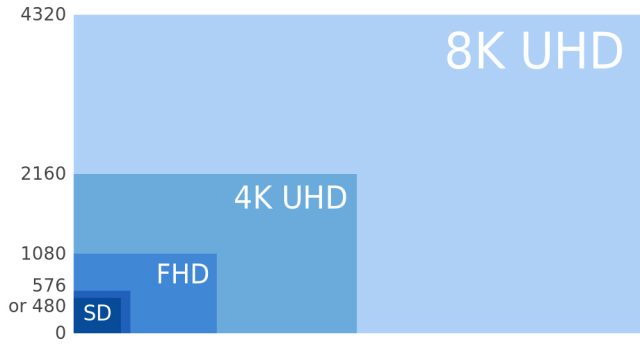
VESA, the standards body responsible for such luminary technologies as DisplayPort and the omnipresent VESA monitor mount, has published the specification for version 1.4a of Embedded DisplayPort (eDP). The new standard builds upon DisplayPort 1.3, which was published at the end of 2014. In short, eDP 1.4a allows for laptops, smartphones, tablets, and all-in-ones with 8K displays (7680×4320) or high-frequency (120Hz) 4K displays—but it includes a few other neat features, too.
eDP 1.4a appears to be almost entirely based on DisplayPort 1.3—which was published in September 2014—with a couple of new features thrown in for good measure. eDP 1.4a specifies four high-speed (HBR3) lanes between the graphics adapter and display, with each lane capable of 8.1Gbps; the lanes can either be used individually, in pairs (more on that later), or all together for a total theoretical bandwidth of 32.4Gbps. That's enough bandwidth to drive a 4K display (3840×2160) at 120Hz with 10-bit color or an 8K display at 60Hz.
Beyond higher bandwidth, one of the more interesting features of eDP 1.4a is Display Stream Compression (DSC), a standard developed by VESA and MIPI that—as the name implies—compresses the output video signal. According to VESA, the compression is "visually lossless" (i.e., it is lossy, but your games won't suddenly look like a hand-me-down JPEG). VESA and MIPI say that DSC can reduce the component cost and power consumption of high-resolution displays—a claim that obviously needs to be confirmed once eDP 1.4a devices start shipping.
Gamers will be happy to hear that eDP 1.4a also includes (optional) support for Adaptive Sync, which can reduce screen tearing and graphics stutter—both of which are generally caused by the display and computer falling out of synchronization (which can occur for a variety of reasons). Because Adaptive Sync is an optional feature of eDP 1.4a, it might only be available on more premium devices. The other notable new feature in eDP 1.4a is Multi-SST Operation (MSO), which lets each of the four lanes drive a portion of a segmented display.
The eDP 1.4a standard is available to VESA members today, and the first devices that use the standard are expected in 2016. (Devices with the previous standard, eDP 1.4, are only now starting to ship.) While I have no doubt that we'll see plenty of smartphones and laptops with 4K displays by 2016, 8K might be a bit of a stretch. It's important to note that eDP is just one part of the equation—we also need displays and GPUs that can handle the massive computational and bandwidth requirements of 8K graphics.
reader comments
93